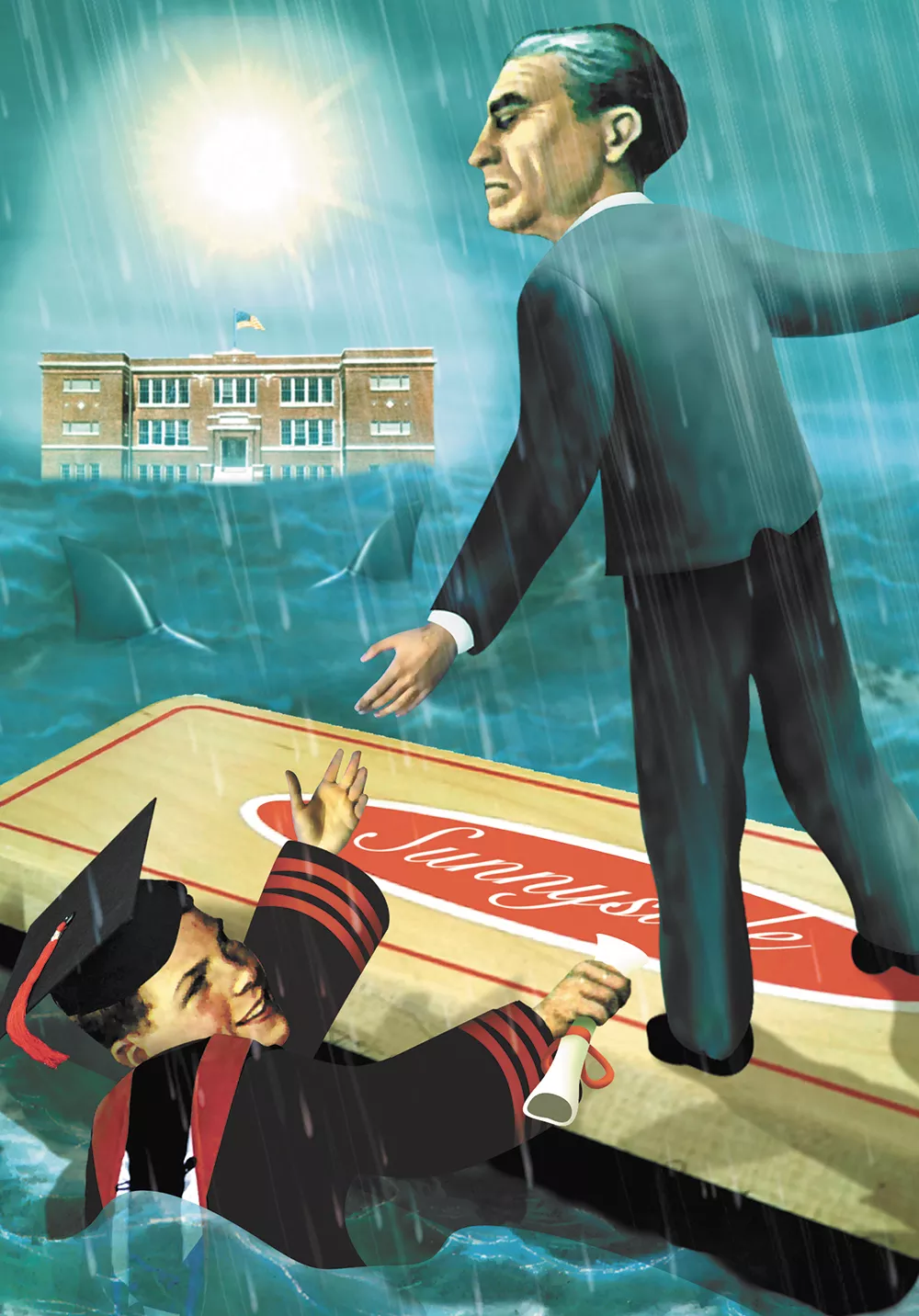Some ideas about education seem almost ironclad: Poverty is nearly impossible to overcome. Sudden change just makes everyone angry. Swapping out administrators can't fix a struggling school.
But Chuck Salina, department chair of leadership and administration at Gonzaga University, has practical, on-the-ground experience that says otherwise. From 2010 to 2012, he served as a "turnaround' principal, tasked with reviving a Tri-Cities high school failing by nearly every measure.
The results shocked even him. "It's freakin' scary," Salina says. "This is so much bigger than anything I did."
Make no mistake, Sunnyside High School was in trouble. In the classes of 2007, 2008 and 2009, fewer than half the students had graduated — and the closure of the district's alternative school, sending a wave of troubled students to Sunnyside, made things even worse.
Few schools in Washington had as many disadvantages. Nearly the entire Sunnyside student body is Hispanic, many are bilingual, and some students can't speak English at all. Poverty is so widespread that every student gets a federally funded free lunch and breakfast. Fights broke out in the halls. The surrounding town was beset by gang violence.
There was one silver lining. Those problems made Sunnyside eligible to win a federally funded School Improvement Grant, if it was willing to dismiss its current principal. Salina, formerly a principal in Colville, became his replacement.
"I had complete freedom," Salina says. "They just said, 'Just change this school.'"
He wanted to bring up graduation rates, and he didn't sugarcoat the challenge. "I remember the first assembly I had with the kids. We said, 'Half you stand up, and half of you sit down,'" Salina says. "'You half standing — you can leave, because you're not going to graduate.' ... You could see the kids get serious right there."
Salina, backed by the $5 million grant, a host of academic research and a community willing to try anything to save Sunnyside, introduced a barrage of changes. They included:
• Restrictions that only upperclassmen could eat lunch off-campus, only if they had good grades, and only if they kept the school clean and their aggregate attendance above 94 percent. It stemmed the tide of students ditching school after lunch.
• Four additional hours of school a week allowed Salina to add 20 extra minutes of lunch, called "Grizzly Time." Students with grades lower than C+ had to spend that time getting help from a teacher; students with Fs had to receive additional afterschool tutoring.
• Senior students were assigned colors (green, yellow, orange and red) signaling whether they were on track for graduation. With the numbers of students in each color displayed in the Sunnyside commons area, students could see their peers move from red to green throughout the year.
• Gonzaga grad students studying counseling and teaching partnered with Sunnyside and visited with the kids. Busloads of Sunnyside kids visited Gonzaga, whetting their appetites for higher education.
• Parent volunteers on a community truancy board met with students who'd been skipping school to help improve their attendance.
• Counselors would visit students in the classroom two or three times a week to help them achieve their goals. "Every student in the school had a guardian angel," Salina says.
Reduce Sunnyside's success simply to a list of programs, however, and Salina will bristle. His big takeaway, outlined in a case study he co-authored for the journal Professional School Counseling, is that students need three things to succeed: high standards, social support (that list of rules and programs) and strong personal relationships with teachers, counselors and administrators.
"If you really build relationships with kids, they want to graduate too," Salina says. Spend the time and energy investing in kids, make them feel safe and valued, and it pays off.
Sunnyside student Stefani Anciso says she saw the entire atmosphere change back in 2010. Many teachers and students wouldn't interact in the halls, but Salina was an exception. "He wasn't the best at remembering names, but he'd always stop and talk with them," Anciso says.
That began to spread. Sunnyside assistant principal Dave Martinez says it was a cultural shift, a selflessness that began with administrators, then trickled down to teachers, students, even the surrounding community. Teachers and students would greet each other in the halls. Students would give each other pep talks, pushing each other to attend class so they could earn open lunch. Morale soared.
"Pretty soon we started to get a swagger," Salina says.
Sunnyside had reason to be cocky.
From 2009 to 2013, the graduation rate at Sunnyside rose from 49 percent to 85 percent. State test scores, attendance and grades rose as well.
In a grim but positive sign, not a single Sunnyside student died of gang violence last year. Today, all the money from the grant is gone, but the academic gains remain.
These days, Salina says, students are requesting to transfer into Sunnyside. Other struggling schools, like Rogers High School in Spokane, are trying to follow in Sunnyside's footsteps.
"Every kid can graduate," Salina says. "It's not poppycock." ♦


